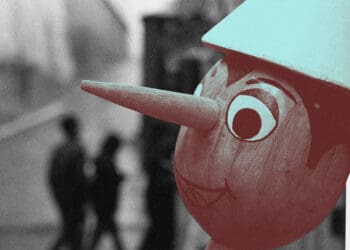Resulting Settlements and Remedial Measures
Brazilian oil and gas giant Petrobras has entered into a series of settlements in closing out corruption investigations and litigation. For a long period of time, corruption was endemic at the corporation (the DOJ estimates illegally generated funds for payments as at least $2 billion), and the bill is finally coming due.
When it comes to a poster-child for corrupt organizations, there is very little competition that can eclipse Petrobras, the Brazilian state-owned oil and gas company. Petrobras has long suffered under a stigma of corruption, and as outlined in its recent settlement actions, the title was well deserved.
Petrobras’ corruption was firmly coordinated and entrenched with Brazil’s political corruption. The pervasive nature of Brazil’s political and oil and gas corruption was inextricably intertwined.
In a series of coordinated settlements, Petrobras closed its investigation, enforcement and collateral litigation books to include:
- Petrobras entered into a non-prosecution agreement with the Justice Department under which it was ordered to pay a criminal penalty of $853.2 million. However, under the NPA, Petrobras will pay 10 percent or $85.3 million of the criminal penalty.
- Petrobras settled with the Securities and Exchange Commission and agreed to disgorge $933.5 million, consisting of $711 million in disgorgement and $222.5 million in prejudgment interest. The disgorgement amount was reduced and deemed satisfied by Petrobras’ prior $933.4 million payment to the class action settlement fund in pending securities litigation in the Southern District of New York, In re Petrobras Securities Litigation. As a result, Petrobras’ total payment to the SEC was reduced to $85.3 million.
- The total amount paid to the DOJ and SEC was $170.6 million.
In reaching the settlements, Petrobras did not receive credit for voluntary disclosure, but did for its cooperation and remediation. Petrobras earned a 25 percent reduction from the bottom of the U.S. Sentencing Guideline range.
Petrobras’ remediation was extensive and included a number of interesting improvements. All of the individuals involved in the corrupt conduct are no longer working at Petrobras or engaged as contractors. The remedial measures included:
- Replacing the board of directors and the executive board (the company’s high-level managers) and implementing governance reforms, such as expanding the scope of decisions requiring board of director approval;
- Elevating and revamping the company’s compliance function, including creating and staffing the Division of Governance and Compliance (DGC), and mandating that the Officer of DGC cannot be terminated without the affirmative vote of a board member representing minority shareholders;
- Limiting individual decision-making authority by implementing a “four eyes” approval policy that requires a second review by supervisors from different reporting lines for substantive decisions;
- Creating new corporate investment policies and procedures, including a new approval authority matrix, mandatory collective decision-making and participation of the Division of DGC in investment committees;
- Enhancing the company’s policies and procedures related to confidential reporting and investigations, including restructuring the Office of the Ombudsman, implementing a confidential reporting hotline and enhancing the procedures related to the company’s Internal Commissions of Inquiry;
- Updating policies and procedures related to compliance;
- Implementing measures to ensure the company’s operations are insulated from improper political interference, including new hiring and promotion procedures, a comprehensive government relations policy and uniquely protecting the Officer of DGC within the organization;
- Enhancing anti-corruption training by requiring all employees to complete compliance training, providing specialized training to employees engaged in the procurement of goods and services and providing anti-corruption training to the board of directors and executive board;
- Creating an ethics committee responsible for guiding, disseminating and promoting compliance with ethical principles and conduct obligations;
- Creating a committee within the company’s compliance function to discipline employees and ensure that discipline is meted out consistently;
- Disciplining employees known to have violated company policies and procedures, including suspending employees, removing their managerial functions and terminating their employment;
- Enhancing controls related to procurement and contracting, including centralizing the procurement function, segregating procurement duties and implementing a risk-based integrity due diligence program for prospective contractors; and
- Implementing a work program to mitigate the material weaknesses identified by the company’s independent auditors in 2015, which since have been eliminated in the independent auditors’ 2017 report.
In describing the nature and extent of the corruption, the Justice Department liberally described the corruption scheme as massive in its statement of facts.
The scheme, which was executed at the highest levels of Petrobras, occurred between the period of 2004 and 2012, including senior executives who served on the Petrobras board of directors, senior managers and contractors and suppliers. The scheme included bid-rigging and bribery and generated massive funds to pay the executives, managers, contracts and important political leaders and representatives.
The contractors paid bribes typically totaling between 1 and 3 percent of the value of contracts obtained from Petrobras, which were then split among Petrobras executives, politicians, political parties and facilitators. The money for bribes was generated primarily through inflated invoices and costs, including fictitious consulting agreements incurred by contractors. Petrobras executives, managers and employees assisted the corrupt contractors through a variety of actions or omissions, including failure to maintain adequate internal controls.
Petrobras’ corruption was so vast and so massive that the DOJ’s statement of facts could only estimate the amount of illegally generated funds for corrupt payments as roughly $2 billion, half of which ended up in the pockets of relevant politicians and political parties.
The SEC settlement focused on Petrobras’ false and misleading statements to U.S. investors who owned and/or traded Petrobras’ ADRs (American depository shares) contained in a 2010 stock offering for $10 billion. In particular, the SEC alleged that Petrobras misrepresented its assets, infrastructure projects, the integrity of its management and the nature of its relationships with its majority shareholder, the Brazilian government. Finally, the SEC noted the false certifications by various executives of compliance with internal control requirements under Sarbanes-Oxley.
This article was republished with permission from Michael Volkov’s blog, Corruption, Crime & Compliance.



 Michael Volkov is the CEO of The Volkov Law Group LLC, where he provides compliance, internal investigation and white collar defense services. He can be reached at
Michael Volkov is the CEO of The Volkov Law Group LLC, where he provides compliance, internal investigation and white collar defense services. He can be reached at 








